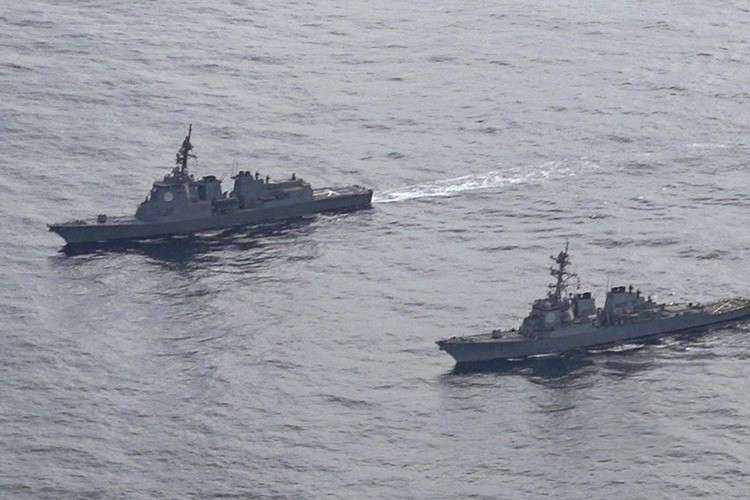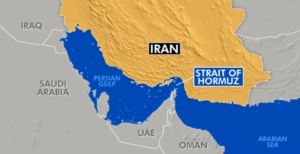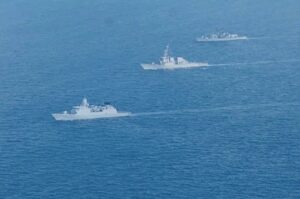
World braces for oil shock: The Strait of Hormuz is barely 21 miles wide at its narrowest navigable lane, yet a fifth of the planet’s daily oil and almost the same share of liquefied natural gas squeeze through this liquid bottleneck. In 2024 the flow averaged 20 million barrels a day, and volumes in the first quarter of 2025 have held steady.
A single mine-laying operation—or even the credible threat of one—could turn this lifeline into a liability overnight, and that is precisely the scenario Iran now dangles as retaliation for US and Israeli strikes on its territory.
Strategists in Washington concede Iran still possesses the naval wherewithal to attempt a closure: fast-attack craft, a motley fleet of mines and drones, and, crucially, enough asymmetry to tie down superior navies for weeks. Mines cannot be neutralised with press releases; they demand divers, robots and time—commodities that global markets price ruthlessly.
READ I Trump’s Iran strike could erode US influence
Oil markets: the first casualty
In the hours after the latest US air-strikes, Brent crude pierced $80 for the first time this year, and futures traders promptly dusted off three-digit scenarios. Goldman Sachs warns that even a partial flow disruption—say, half the traffic halted for a month—could catapult Brent toward $110. Oxford Economics sketches a darker canvas: oil at $130 and global GDP sliced by 0.8 percentage point—roughly the annual output of South Africa evaporating in smoke.

Some analysts still insist markets are “calling Iran’s bluff,” pointing to the modest pull-back that followed the first price spike. That optimism is a luxury contingent on restraint in Tehran. If Islamic Revolutionary Guard Corps commanders conclude they have nothing more to lose—remember, American sanctions already crimp Iran’s formal exports—complacent traders will discover that oil futures settle faster than diplomats can talk.
Oil shock’s inflationary fuse
A $20-30 jump in crude is not merely a line item for energy analysts; it is a stealth tax on every household from Boston to Bengaluru. The International Monetary Fund’s shorthand says a sustained 10 per cent rise in oil lifts global consumer prices by about 0.4 percentage point within a year and shaves off 0.15 point of world GDP growth. Layer those multipliers on a $110-130 barrel and suddenly the fragile disinflation story that central banks have been narrating since late 2024 rings hollow.
Bond markets would sniff policy paralysis before finance ministers finish their press conferences. Higher risk premia, a stronger dollar, and costlier freight insurance around the Gulf together tighten global financial conditions exactly when they can least afford it.
Oil shock, ships, and insurance
The strait is not just an oil pipeline, it is a maritime super-highway. Rerouting a VLCC from Gulf ports to the Red Sea via Saudi Arabia’s East-West pipeline—or through the UAE’s Abu Dhabi-Fujairah link—absorbs only a sliver of lost capacity: six to seven million barrels per day at best. The rest queues up or stays underground. Insurance underwriters, still nursing losses from Red Sea drone attacks, would slap war-risk premia on every hull within a thousand nautical miles. Container rates for Asia–Europe loops would shoot up, reviving the 2021 spectre of supply-chain snarls.

If Hormuz sneezes, Asia catches pneumonia. Last year 84 per cent of oil and 83 per cent of LNG transiting the strait headed east of Suez. China lifted 5.4 million barrels per day; India took 2.1 million. True, New Delhi now buys discounted Russian Urals and Latin American blends, but sea routes cannot outrun arithmetic: India’s refineries still rely on Gulf crudes for flexibility and cost.
Energy Minister Hardeep Singh Puri has sought to calm nerves, noting that “a large volume of our supplies do not come through Hormuz now.” Yet, even if molecules come from Vladivostok or Brunei, prices are set at the margin—usually in London or Singapore—and every importer pays the same escalator.
For China the quandary is starker. Tehran is its discount outlet; a closure chokes the bargain barrel and pushes Beijing onto the same crowded spot market as Tokyo and Seoul. Little wonder Secretary of State Marco Rubio publicly nudged Beijing to lean on Tehran.
Fiscal and monetary knock-ons
Higher hydrocarbon costs will widen fiscal deficits in oil-subsidising nations and force central banks to choose between fighting inflation and nurturing feeble recoveries. The Reserve Bank of India’s calibrated pause on rates will confront a fresh test; the European Central Bank’s long-promised easing cycle may stall; and the US Federal Reserve’s “higher for longer” mantra could morph into “higher for longer still.”
Commodity exporters—Russia, Brazil, Nigeria—pocket a transient windfall, but even they suffer once global demand sags. A synchronised slowdown in the United States, China and the eurozone is a contagion no exporter’s fiscal rule can inoculate against.
Can Iran afford suicide economics?
Sceptics argue a full blockade would be “economic suicide” for Iran, depriving it of hard-currency sales to China and further isolating its battered economy. They are right—up to a point. Yet history shows regimes sometimes prioritise political signalling over balance-of-payments arithmetic.
Mining Hormuz for even a week would demonstrate capability, rally domestic hard-liners and raise the diplomatic cost for Israel. Tehran may calculate that Washington, already stretched in Europe and the Indo-Pacific, will seek de-escalation rather than a prolonged de-mining campaign.
Navigating the storm: policy options
First, diplomacy must outrun brinkmanship. Washington’s quiet channels with Muscat, Doha and—yes—Beijing should work overtime. A back-room understanding that neither US nor Israeli assets will target Iranian naval infrastructure could remove the casus belli.
Second, consumer nations need a coordinated release from strategic petroleum reserves (SPRs). The 31-member International Energy Agency still holds over 1.4 billion barrels of emergency stocks. A 60-day, 4 mbd draw would offset half the strait’s daily flow and anchor expectations.
Third, central banks should pre-announce swap lines and liquidity windows to calm dollar funding markets. The panic of 2020 taught us that oil shocks quickly metastasise into credit shocks.
Fourth, India must dust off its own contingency playbook: accelerate pipeline diplomacy with Russia via the Arctic route, expand SPR capacity beyond the current 5.3 million tonnes, and insulate vulnerable households with targeted transfers rather than blunt fuel subsidies that bleed the exchequer.
The global economy may well muddle through an oil shock, but the margin of error is vanishingly thin. Prudence, not bravado, is the better part of petro-politics. If the Hormuz valve is ever shut, even briefly, the cost will be measured not just in dollars per barrel but in lost jobs, busted budgets and—most tragically—avoidable human hardship. The world would do well to remember that before the first mine hits the water.
